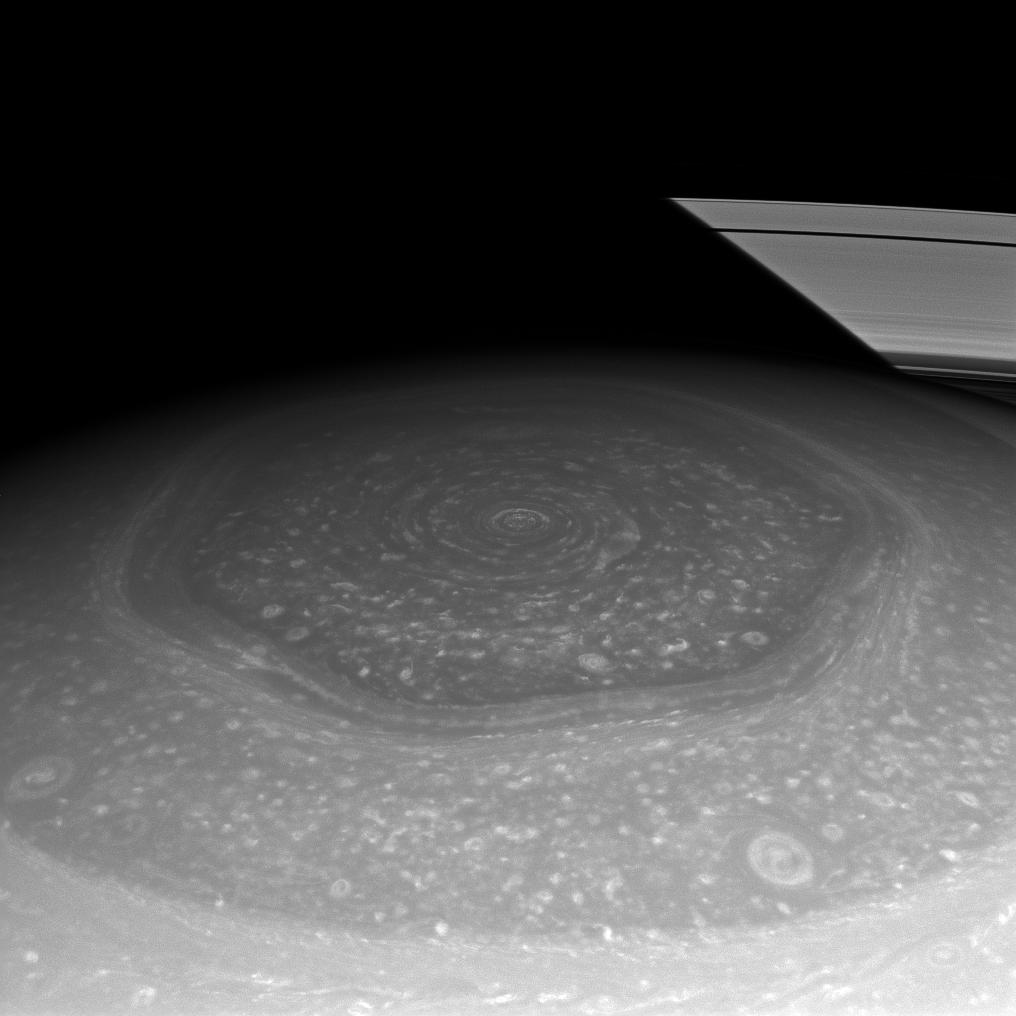Hexagon and Rings

| PIA Number | PIA14646 |
|---|---|
| Language |
|
Saturn's north polar hexagon basks in the Sun's light now that spring has come to the northern hemisphere. Many smaller storms dot the north polar region and Saturn's signature rings, which appear to disappear on account of Saturn's shadow, put in an appearance in the background.
The north polar hexagon was first observed by Voyager. To see more of the hexagon, see The Persistent Hexagon and Spring Reveals Saturn's Hexagon Jet Stream.
The image was taken with the Cassini spacecraft's wide-angle camera on Nov. 27, 2012 using a spectral filter sensitive to wavelengths of near-infrared light centered at 750 nanometers.
The view was acquired at a distance of approximately 403,000 miles (649,000 kilometers) from Saturn and at a Sun-Saturn-spacecraft, or phase, angle of 21 degrees. Image scale is 22 miles (35 kilometers) per pixel.
The Cassini-Huygens mission is a cooperative project of NASA, the European Space Agency and the Italian Space Agency. The Jet Propulsion Laboratory, a division of the California Institute of Technology in Pasadena, manages the mission for NASA's Science Mission Directorate in Washington. The Cassini orbiter and its two onboard cameras were designed, developed and assembled at JPL. The imaging team is based at the Space Science Institute, Boulder, Colo.
For more information about the Cassini-Huygens mission visit http://saturn.jpl.nasa.gov or http://www.nasa.gov/cassini . The Cassini imaging team homepage is at http://ciclops.org .
Credit: NASA/JPL-Caltech/Space Science Institute
